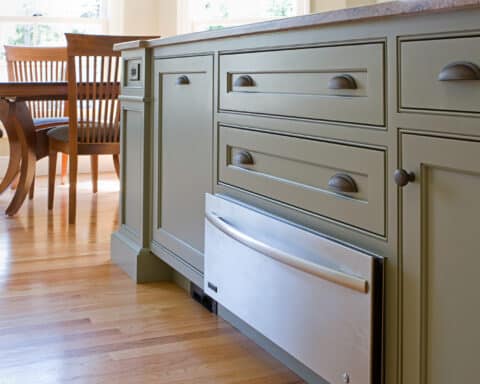
Whether you are a do-it-yourself enthusiast or looking to expand your knowledge about home elements, understanding window hardware is surprisingly enriching. Windows are more than mere glass panes that let in the sunlight and block out the cold; they are complex structures with various hardware parts each having a unique function.
The Different Types of Window Hardware
Window hardware includes components that enable windows to open, close, lock, and function properly, such as hinges, locks, lifts, balances, operators, and weatherstripping. Hinges connect the sash to the frame for swinging open, locks secure the closed window, lifts attach to bottom rails for easy raising/lowering, balances counterbalance the sash weight using springs or pulleys, operators remotely control skylights and heavy windows, and weatherstripping seals gaps to prevent air infiltration.
Secondary hardware includes limit devices, keepers, actuators, pulls, and latches. Knowing the types of hardware and their functions allows proper selection, installation, and maintenance for ideal window operation.
What is a Vinyl Glazing Bead?
Vinyl glazing beads are extruded PVC trim components that snap into grooves around a window or door opening to hold glass panels securely against the frame, creating a weather-resistant perimeter seal. The durable, flexible vinyl material resists cracking and rotting while allowing a tight compression seal for excellent insulation.
Understanding the Tackle Window Balance
Tackle balances are spring-loaded pulley mechanisms in window jambs that counterbalance hung windows using cables, pulleys, and springs. Understanding how they work enables proper installation, maintenance, and repair. They keep windows open at desired heights and prevent slamming. Knowing the fundamentals of tackling balance components helps diagnose and fix problems so windows operate properly.
How Spiral Window Balances Operate
Spiral window balances use a flat spiral spring coil in a metal housing to counterbalance window sashes. As the sash is raised or lowered, the spring twists and untwists. One end of the spring connects to the window jamb, the other end attaches to the sash with a lift cord. Opening the sash pulls the cord, twisting the spring tighter.
The tensioned spring then uses its stored energy to smoothly and safely push the window closed again. The spring tension can be adjusted for the proper counterbalance force. Spiral balances are common on double-hung windows but are also used on casements and awnings.
Understanding Window Casement Hardware

Casement windows open on hinges like a door. They often have hardware like crank handles and sash locks to secure them shut. Casement window hardware refers to components that allow the window to function properly, including hinges, keepers, crank handles, sash locks, operators, and accessories for smooth opening and closing. Hinges connect the sash to the frame to swing open and closed.
Multiple adjustable hinges ensure smooth operation. Keepers provide a positive stop when closed by engaging with a strike plate to hold the sash tightly shut. Crank handles attach to a mechanism within the sash to allow easy opening and closing. Quality casement hardware has a fold-away handle that can be stowed flat when not in use.
What is a Hung Sash Lift?
A hung sash lift is a piece of hardware used on double-hung windows to make it easier to open and close the bottom and top sashes. Double-hung windows have two vertically sliding sashes, with one sitting on top of the other within the frame.
The sash lift is a metal tab, loop, or grip attached to the bottom rail of the bottom sash and the top rail of the top sash. By grasping this hardware, a user can conveniently slide each sash up and down within the frame to open and close the window. Sash lifts provide better grip and leverage versus trying to slide the sash directly. They allow you to operate the window with less effort. Sash lifts come in a variety of styles, shapes, and finishes to match the aesthetic of the windows.
How a Casement Window Crank Works
Casement window cranks consist of gear-driven mechanisms that allow easy opening and closing of outward-hinged casement windows. Rotating the crank handle drives a worm gear against an arm connected to the window sash, smoothly pushing the window open or drawing it closed. High-quality adjustable operators prevent sagging and properly align windows, while advanced versions feature fold-away crank handles for a sleek look when not in use.
How Rectangular Tilt is Differentiated from Arched Tilt
Tilt sash windows feature an operable sash that can tilt inward at the top for ventilation. The sash design determines whether it’s a rectangular or arched tilt sash. Rectangular tilt sashes have a standard straight and flat sash design that tips inward when needed. Arched tilts feature a curved radius sash usually with a half-circle or elliptical shape at the top.
When tilted inward, the arched sash creates a unique visual appearance. The arched shape also allows more space for airflow at the top of the window when opened for ventilation.
Turn Trims in Louver Windows
Louver windows contain a series of slanted, overlapping glass “louvers” to allow ventilation. The turn trim refers to an operating mechanism on the side of the window frame. It is a metal gear operator with a handle.
Turning the handle causes the louvers to rotate open and closed in unison. This allows the window to be adjusted anywhere from fully closed up to fully open for maximum airflow. High-quality louver windows will have a smooth operating turn trim that allows easy control of the louver positions.
The turn trim may have a locking mechanism that can secure the louvers into a fixed position when desired. Different louver windows may have horizontal or vertical louvers controlled by the turn trim.
The Importance of Window Hardware
Whether you’re a homeowner, contractor, or architect, having in-depth knowledge of window hardware helps ensure proper specification, installation, use, and maintenance. From understanding different window parts to knowing which materials to select, having this in-depth knowledge can make your home upgrade much easier.
Get More Home Insight
Interested in more insider insights when it comes to home design? Check out High Performance Home’s website for informative blog posts and to learn more about our mission to connect stakeholders in the home industry to drive performance and development.
If you want to learn more about home hardware, take a look at our hardware guide or explore modern solutions in cabinet hardware. You can also learn more about prioritizing safety with security hardware and find inspiration by learning about hardware in kitchens, hardware in gathering rooms, and see our bathroom page for design ideas.
Table of Contents
Selecting the perfect cabinetry to meet your client’s needs can be challenging with the endless options available. As a builder, you want
Read More →Are you thinking of upgrading your kitchen and wondering where to start? Have you considered adding a warming drawer to enhance both
Read More →Shopping for a new freezer can be a daunting task. With a range of different types, features, and brands to choose from,
Read More →In the world of construction, appliances need to meet specific requirements that revolve around functionality, durability, and cost-effectiveness. This guide is dedicated
Read More →



